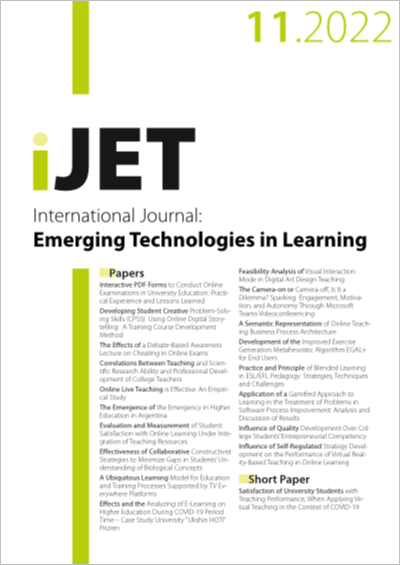Effectiveness of Collaborative Constructivist Strategies to Minimize Gaps in Students’ Understanding of Biological Concepts
DOI:
https://doi.org/10.3991/ijet.v17i11.29891Keywords:
Conceptual understanding, constructivist, collaborativeAbstract
This study aimed to test how the collaborative constructivist learning strategies can reduce the gap in students’ understanding of biological concepts, compared to Novick’s constructivist strategies, and student team achievement divisions (STAD) collaborative strategies. Six classes of tenth graders consisted of 12 upper and lower academic students each were randomly placed into three learning strategy treatment groups: Collaborative constructivist, Novick’s constructivist, and STAD. Students were given essay to tests their biological concepts understanding before and after treatment. The difference in students’ understanding and the gaps in understanding between UA and LA students were analyzed. The results showed no difference in students’ understanding if treated with Novick’s and collaborative constructivist. Differences in students’ understanding were found in the treatment of STAD. Students’ understanding was higher if treated with collaborative constructivist and Novick’s constructivist than STAD. Collaborative constructivist strategies can reduce the gap in students’ understanding and optimize gain in students’ understanding to the other two strategies.
Downloads
Published
How to Cite
Issue
Section
License
Copyright (c) 2022 Baskoro Adi Prayitno

This work is licensed under a Creative Commons Attribution 4.0 International License.



